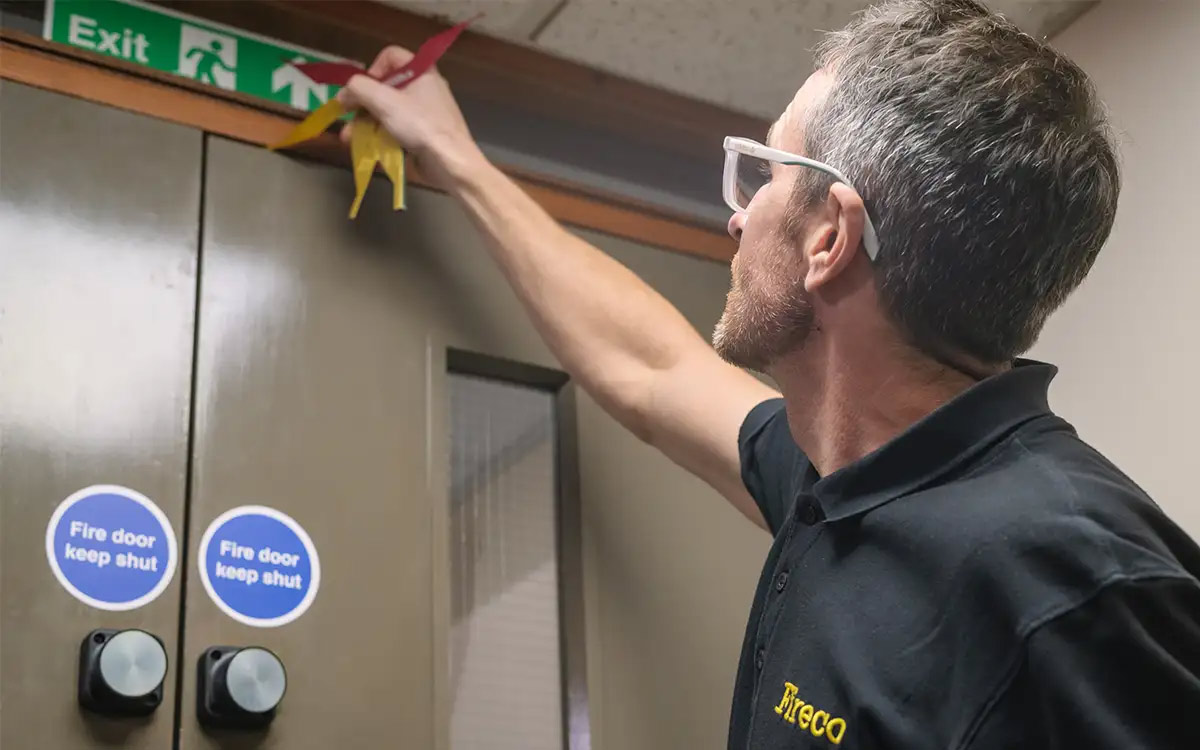Fire and smoke can spread fast, so there’s not much time to think about your next action. This is why having a clear evacuation plan in place is vital! Whether it’s in your own home, at work or somewhere you’re visiting, you should always have a plan to follow.

Not the best advice!
What to do in the event of a fire if you are evacuating:
- Act quickly. The fire alarm should have alerted everyone, so while you’re evacuating, you should see others also taking the same route. The best practice is to stay calm and move swiftly and orderly.
- Don’t waste time. As much as people want to save their belongings, it’s a lot safer to leave the building immediately, taking as little as possible.
- Before opening any doors, test for heat. Don’t go for the door handle first as it may be hot. Touch the door with the back of your to test for heat.
- Don’t investigate the fire or try to tackle it unless trained to do so. This could put yourself and others at risk.
- If there’s any smoke on your evacuation route, stay as low as possible.
- If there are any open doors, close them behind you. This will help slow down the spread of the fire.
- Once you’re safe from the harm of smoke and fire call 999.
- Don’t go back into the building until advised it’s safe to do so.
What to do in the event of a fire if you have a Stay Put policy or can’t evacuate:
- If you’re trapped or can’t evacuate for whatever reason, get behind a closed fire door and block the bottom of the door with a towel, sheets or clothing to prevent smoke from getting through.
- Once you’re in a reasonably safe place, call 999, inform the services of the fire and let them know you are staying put.
This is just some basic advice on how to react in a safe way during a fire situation. You should always know the evacuation policies and plans for the building you are in. Workplaces have a Responsible Person and Fire Wardens who can help if you aren’t sure about any of the procedures.
Delve further into fire safety procedures with our eBooks





0 Comments